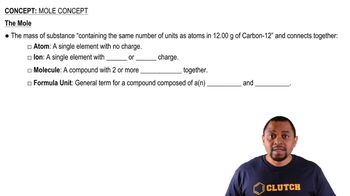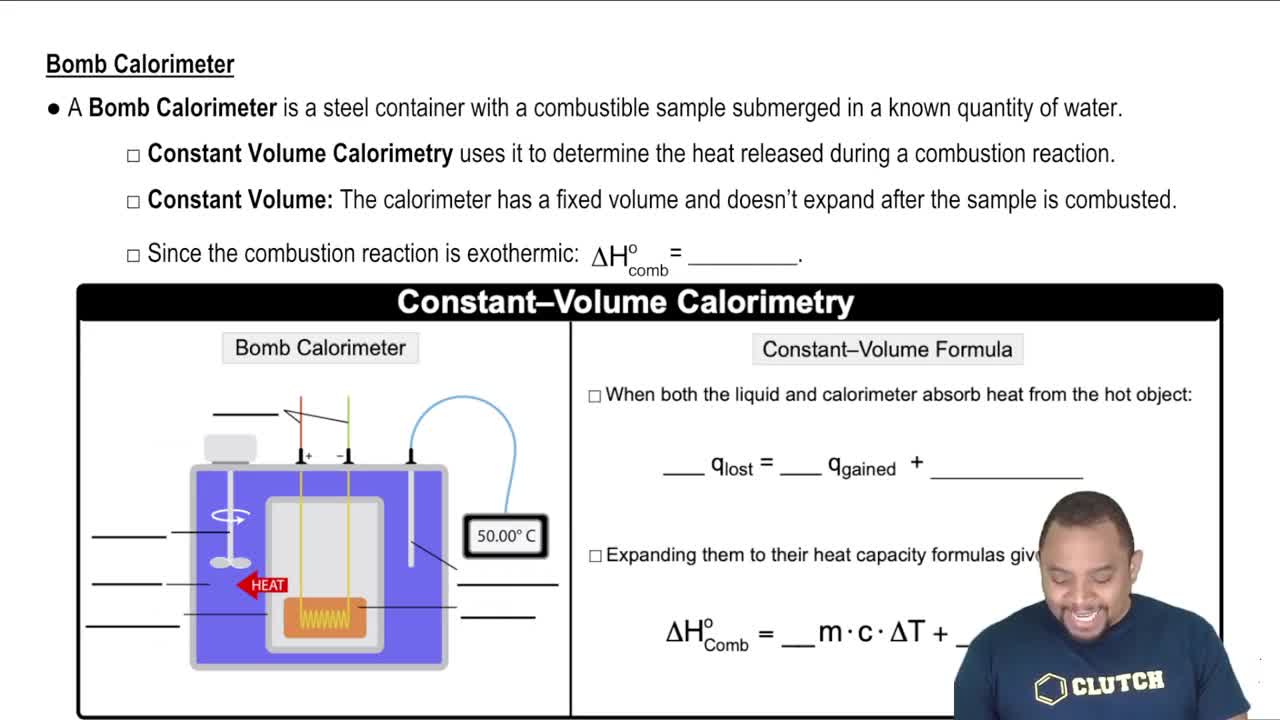Here are the essential concepts you must grasp in order to answer the question correctly.
Molarity
Molarity is a measure of concentration defined as the number of moles of solute per liter of solution. It is expressed in units of moles per liter (mol/L). To calculate molarity, the formula used is M = n/V, where M is molarity, n is the number of moles of solute, and V is the volume of the solution in liters.
Recommended video:
Moles
A mole is a fundamental unit in chemistry that quantifies the amount of substance. One mole corresponds to approximately 6.022 x 10²³ entities, such as atoms or molecules. In the context of solutions, knowing the number of moles of solute is essential for calculating molarity and understanding the composition of the solution.
Recommended video:
Volume of Solution
The volume of a solution is the total space that the solution occupies, typically measured in liters (L) for molarity calculations. It is crucial to accurately measure the volume of the solution, as it directly affects the molarity. In this case, the volume is given as 1.15 L, which will be used in the molarity formula to determine the concentration of KI in the solution.
Recommended video:
Constant-Volume Calorimetry
 Verified step by step guidance
Verified step by step guidance


